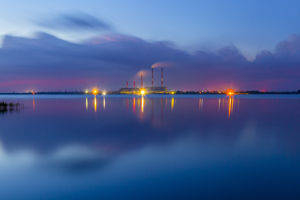U.S. Department of Energy Office of Science
U.S. Government: Agencies/Departments/Divisions | Federal Agencies
Recent News About U.S. Department of Energy Office of Science
-
Firsthand fieldwork: ORNL scientists establish monitoring in at-risk coastal ecosystem
As a biogeochemist at the Department of Energy’s Oak Ridge National Laboratory, Matthew Berens studies how carbon, nutrients and minerals move through water and soil.
-
Math Primes High-Performance Computing for the Age of AI
Increasing traffic congestion in the Seattle area is a good analogy for a similar increase in congestion on high-performance computing (HPC) systems, according to scientists at Pacific Northwest National Laboratory (PNNL).
-
Element creation in the lab deepens understanding of neutron stars
Led by nuclear astrophysicist Kelly Chipps of the Department of Energy’s Oak Ridge National Laboratory, scientists working in the lab have produced a signature nuclear reaction that occurs on the surface of a neutron star gobbling mass from a companion star.
-
Thousands celebrate Argonne’s transformational science at Open House
It was a day of science, a day of celebration: On May 20, Argonne National Laboratory opened its doors to the public for its long-awaited Argonne Open House, the first in seven years.
-
DOE Announces $46 Million for Commercial Fusion Energy Development
The U.S. Department of Energy (DOE) today announced $46 million in funding to eight companies advancing designs and research and development for fusion power plants, representing a major step in President Biden’s commitment to a pilot-scale demonstration of fusion within a decade.
-
Mixing Metals For Improved Performance
A teenage fascination with metals has led to a prestigious early-career award for a superconducting radiofrequency (SRF) materials scientist at the U.S. Department of Energy’s Thomas Jefferson National Accelerator Facility.
-
A first step to designing better solid-state batteries
Electrifying transportation is an essential step towards mitigating climate change.
-
Early Frontier users seize exascale advantage, grapple with grand scientific challenges
With the world’s first exascale supercomputing system now open to full user operations, research teams are harnessing Frontier’s power and speed to tackle some of the most challenging problems in modern science.
-
PubSci Explores the Burning Questions of How Wildfires Connect to Climate
The U.S. Department of Energy’s (DOE) Brookhaven National Laboratory brought its “PubSci” science café and conversation series back to the public with a packed house at Painters’ Restaurant in Brookhaven the evening of May 10, 2023.
-
New AI Model Aims to Plug Key Gap in Cybersecurity Readiness
Imagine you’re the new manager of a large apartment building and someone has stolen one of your keys—but you’re not sure which one.
-
Liz Laudadio is developing durable materials for clean energy
Elizabeth “Liz” Laudadio first came to the U.S. Department of Energy’s (DOE) Argonne National Laboratory in 2017 as a graduate student.
-
Improving X-Ray Analysis with Artificial Intelligence
Ever play the “Spot the Difference” game, where you find tiny differences between two images? Now imagine there were big splotches of ink across each picture.
-
Precision Nuclear Physics in Indium-115 Beta Decay Spectrum using Cryogenic Detectors
Certain isotopes such as Indium-115 (In-115) are extremely long lived, taking over 100 trillon years for half of the Indium atoms to decay away.
-
New Strategy Can Harvest Chemical Information on Rare Isotopes with a Fraction of the Material
Studying radioactive materials is very difficult due to the potential health risks they pose to scientists.
-
A Simple Solution for Nuclear Matter in Two Dimensions
Understanding the behavior of nuclear matter—including the quarks and gluons that make up the protons and neutrons of atomic nuclei—is extremely complicated.
-
New Insights on the Interplay of Electromagnetism and the Weak Nuclear Force
Outside atomic nuclei, neutrons are unstable particles, with a lifetime of about fifteen minutes.
-
Machine Learning-Based Protein Annotation Tool Predicts Protein Function
Microbes drive key processes of life on Earth. They affect global elemental cycles—the movement of carbon, nitrogen, and other elements.
-
Australian Bushfires Likely Contributed To Multiyear La Niña
The catastrophic Australian bushfires in 2019-2020 contributed to ocean cooling thousands of miles away, ultimately nudging the Tropical Pacific into a rare multi-year La Niña event that dissipated only recently.
-
Study presents new clues about the rise of Earth’s continents
New research from Cornell and the Smithsonian Institution deepens the geological understanding of Earth’s continents by testing and ultimately eliminating a popular hypothesis about why continental and oceanic crusts have contrasting compositions.
-
IU students to conduct research at Department of Energy’s National Laboratories
Three Indiana University Bloomington graduate students will conduct research at National Laboratories as part of the United States Department of Energy’s Office of Science Graduate Student Research program.















